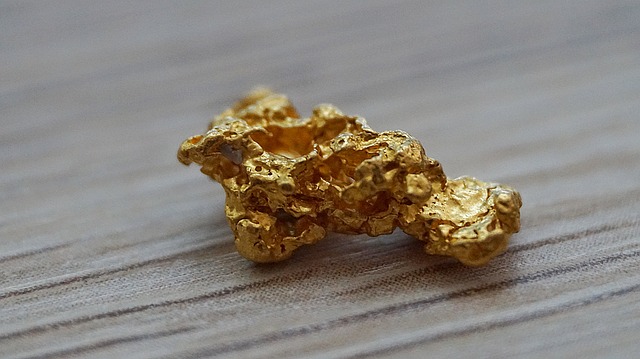The article explains how to transition a traditional IRA into a self-directed IRA that allows for investing in gold through IRAs. Self-directed IRAs enable investment in physical gold, coins, and bullion under IRS regulations, with the requirement of using a specialized custodian who handles transactions, storage, and compliance. Establishing such an account involves funding it via a direct rollover to avoid taxes, selecting from IRS-approved precious metals that meet a 99.9% purity standard, and storing them in an IRS-sanctioned depository. This approach offers both portfolio diversification and protection against inflation and market volatility. The IRS sets strict guidelines for these investments, including prohibited transactions with disqualified persons and mandating that the gold cannot be held directly by the IRA holder. Investors are advised to work with professionals knowledgeable in self-directed IRAs to navigate the complex reporting and handling requirements and to ensure their investments remain compliant with IRS standards to avoid penalties or taxes on earnings. It is crucial to select a trustee and custodian with expertise in managing these types of accounts, as they must oversee secure storage and adhere to regulations for insurance coverage and audits to maintain the investment's legal status within the IRA's tax-advantaged framework.
Explore the transformative journey of repositioning your Individual Retirement Account (IRA) into a tangible asset—gold. This article illuminates the pathway to achieving this unique investment strategy, detailing the establishment of a self-directed IRA with a focus on precious metals. From comprehending the intricacies of such accounts to navigating the IRS regulations, each step is meticulously outlined. We delve into selecting the right trustee and custodian to safeguard your gold IRA, and guide you through the process of acquiring and securely storing your chosen bullion. Dive into the world of financially fortifying your retirement portfolio with the timeless luster of gold.
- Understanding Self-Directed IRAs for Gold Investments
- Steps to Set Up a Self-Directed IRA for Precious Metals
- IRS Rules Governing IRA Investments in Gold
- Choosing a Trustee and Custodian for Your Gold IRA
- Purchasing and Storing Gold Within Your Self-Directed I
Understanding Self-Directed IRAs for Gold Investments

When considering the conversion of a traditional IRA to an investment in gold, it’s imperative to first grasp the concept of self-directed IRAs. These accounts differ from conventional IRAs as they offer broader investment options beyond the typical stock and bond markets. With a self-directed IRA, you can allocate funds into physical gold, coins, and bullion that comply with the Internal Revenue Service (IRS) standards. It’s essential to work with a custodian specialized in precious metals who will handle the transactions, storage, and adherence to IRS regulations.
The process begins by establishing a self-directed IRA through a custodian or trustee that allows for such alternative assets. Once set up, you can then direct your IRA to invest in gold, ensuring it maintains its status as a retirement fund asset. The gold must be held in an IRS-approved depository to preserve the tax-advantaged status of your IRA. This setup ensures that your investment in gold is compliant with the rules governing retirement accounts while providing the opportunity to diversify your retirement portfolio with a tangible asset like gold, which can offer potential protection against inflation and market volatility.
Steps to Set Up a Self-Directed IRA for Precious Metals

To initiate the process of converting your traditional IRA to a self-directed IRA that allows for precious metals investments, begin by identifying a trustee or custodian that specializes in this type of account. The IRS mandates that these accounts must be held by an IRS-approved custodian. Once you’ve selected a custodian, you can fund the new self-directed IRA with funds from your existing IRA through a direct rollover. This is done to avoid tax implications associated with early distributions. After the rollover is complete and your new account is established, you can then select eligible precious metals for investment within the guidelines set forth by the IRS, which include gold, silver, platinum, and palladium in specific forms such as bullion or coins approved for IRA investments. Ensure that all transactions are conducted in compliance with the rules to maintain the tax-advantaged status of your IRA.
Once your self-directed IRA is funded, you can begin exploring precious metals investment opportunities. Your custodian will provide a list of eligible coins and bullion, or you may purchase directly from IRS-approved dealers. It’s crucial to diversify your holdings to mitigate risks associated with market volatility. Regularly review your investments to ensure they adhere to IRS standards and consider rebalancing as needed. Keep in mind that while precious metals can offer a hedge against inflation and currency devaluation, they also come with their own set of risks and should be part of a well-rounded investment portfolio.
IRS Rules Governing IRA Investments in Gold

The Internal Revenue Service (IRS) has specific rules governing investments within Individual Retirement Accounts (IRAs), particularly when it comes to alternative assets like gold. To comply with IRS regulations, investors must hold their physical gold in an IRS-approved depository and cannot take possession of the metal directly from the IRA. The gold held within a self-directed IRA must meet certain purity standards—the IRS stipulates that gold coins or bullion must be 99.9% pure or greater to qualify. Investors are also limited to investing in gold, platinum, palladium, and silver through their IRAs. Additionally, transactions between the IRA holder and disqualified persons are strictly prohibited to maintain the integrity of the IRA’s tax-advantaged status. These rules are designed to ensure that investments within an IRA remain within the scope of permitted assets and that the tax benefits associated with these accounts are preserved. It is imperative for investors considering such an investment to consult with a tax professional or financial advisor who specializes in self-directed IRAs, as there are specific reporting requirements and handling procedures that must be adhered to strictly. This due diligence will help ensure compliance with IRS rules and avoid potential penalties or taxes on earnings within the IRA.
Choosing a Trustee and Custodian for Your Gold IRA

When considering the conversion of a traditional IRA to a gold IRA, selecting a knowledgeable trustee and custodian is paramount. The trustee, who can also serve as the custodian, is responsible for managing the IRA’s funds and ensuring compliance with IRS regulations. This entity must be well-versed in the rules governing self-directed IRAs and have a history of handling alternative assets like precious metals. The custodian, on the other hand, is tasked with holding and safeguarding the physical gold or other approved precious metals within the IRA. It is crucial to choose a reputable custodian that specializes in precious metals, as they must adhere to specific storage and reporting requirements set forth by both the IRS and the Department of the Treasury. These include secure storage arrangements, proper insurance coverage, and regular audits to maintain the integrity and legality of the investment within the tax-advantaged structure of the IRA. Opting for a custodian that is part of the College Savings Plans Network (CSPN) or an equivalent, can provide additional assurance as these entities are often subject to rigorous oversight and compliance standards. By carefully selecting both a trustee and custodian with expertise in gold IRAs, investors can navigate this complex investment strategy with confidence.
Purchasing and Storing Gold Within Your Self-Directed I

When considering the conversion of a traditional Individual Retirement Account (IRA) to a self-directed IRA that includes investments in gold, it’s crucial to navigate the rules and regulations governing such transactions. The Internal Revenue Service (IRS) has specific guidelines on what constitutes a permissible investment within a retirement account. Once you have established a self-directed IRA with a custodian who allows for precious metals, you can purchase gold coins, bars, or bullion that meet the purity standards set forth by the IRS. These standards typically require the gold to be 99.5% pure for coins and bars.
After acquiring eligible gold assets, the secure storage of these holdings is paramount. The self-directed IRA custodian you choose will often provide a range of storage options that comply with IRS regulations. These can include specialized depositories that offer insurance and secure vault facilities designed to protect your investment from theft, loss, or damage. It’s important to work closely with your custodian to ensure that all storage solutions adhere to the rules, maintaining the tax-advantaged status of your retirement savings. Regularly audited and IRS-approved storage solutions are recommended to safeguard your gold investments within your self-directed IRA.
In concluding this exploration into the conversion of an IRA to gold, it is clear that with the right knowledge and steps taken, individuals can effectively diversify their retirement portfolios to include precious metals. By establishing a self-directed IRA that permits such investments, adhering to IRS regulations, and carefully selecting a reputable trustee and custodian, investors can secure gold within their retirement account. The process involves careful consideration of the type of gold to purchase—coins or bullion—and secure storage options. This financial strategy can offer a hedge against inflation and market volatility, potentially enhancing the stability of one’s retirement savings. Prospective investors should thoroughly research and consult with financial advisors to ensure compliance and suitability for their individual circumstances before proceeding with this investment approach.
